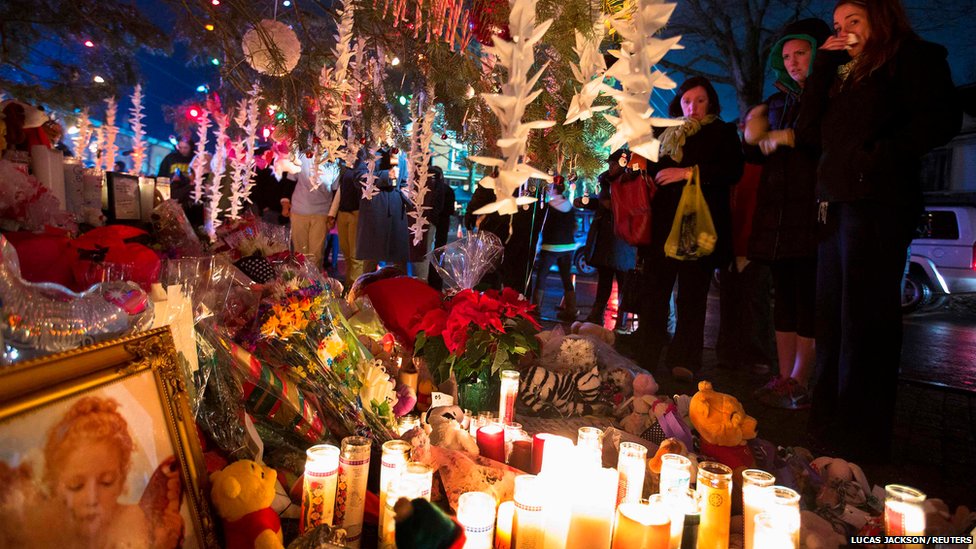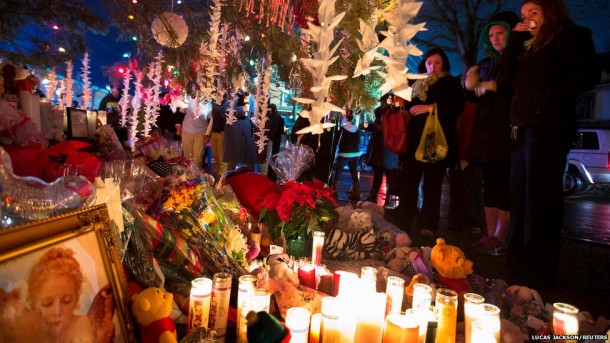An archaic and self-destructive right

When you turn on the news to find that 27 Americans, 20 of them children, have been murdered by a lone gunman and you are horrified but no longer surprised, radical change is imperative.
We know the ensuing hours and days all too well. Interviews with desolate family members, emerging details of the killer’s motive and background, and how they came to be in possession of their weapons are all depressingly familiar.
The world looks on as the United States is once again reeling from a gun-crime atrocity perpetrated on its most vulnerable citizens, its own children. This is painful territory for the American people, who have witnessed mass shootings on a regular basis over the past decade and before, but have never seen an entire class of five- and six-year-olds wiped out, with such ferocity, in an instant.
This was the fourth such shooting during Obama’s presidency. The list of previous victims range from school children to teenagers, cinema-goers to politicians and individual citizens such as Jitka Vesel, a Russian immigrant to America who was fatally shot by a stalker with a weapon illegally obtained on Armlist.com, a listings website that stands accused of selling guns without being subject to proper checks.
Jitka’s family, along with anti-gun violence lobbying group The Brady Campaign, are suing the website for its lax controls, which they claim facilitated the murder. This is the first time a lawsuit has been brought against such a website for supplying weapons illegally.
Though this is a landmark case, which is being closely monitored by groups with an interest in the burgeoning internet guns trade, a large-scale integrated approach by all concerned appears to be the only way to effect a significant change in the law.
It seems every country has its breaking point, when to avoid confronting the need to change an archaic and ultimately self-destructive right is no longer an option. This latest incident may well be America’s breaking point, as vague promises of gun reform are now becoming more focused and are gaining momentum from a range of directions.
Obama has until now been obtuse in his public talks about stricter gun control. Previously, the president had made heartfelt condolences, alluding to a change that needed to be made, but subsequently little was achieved.
However, in his address to the families and victims of Friday’s shooting, Obama said: “We’re all parents. They’re all our children. This is our first task. Caring for our children. It’s our first job. If we don’t get that right, we don’t get anything right.”
In line with these statements, Obama has this week vowed to back a bill that will ban assault rifles, the type of weapon used in the Newtown shooting. It has also been said that the president wishes to tighten loopholes that allow Americans to purchase weapons at gun shows, where buyers do not have to go through the same background checks and waiting periods that are required elsewhere. The use of high-capacity ammunition clips will also come under debate. The new task force in charge of proposals will be headed by Vice President Joe Biden.
Gun control remains a highly emotive issue in the US, where the right to bear arms is enshrined in the constitution’s second amendment. The pro-firearm National Rifle Association (NRA) has been a vociferous campaigner against any incursion into this amendment, but, in an uncharacteristically diplomatic statement on Tuesday, vowed to make “meaningful contributions to help make sure this never happens again”.
Britain reached its own breaking point in 1996 when Thomas Hamilton entered a primary school in Dunblane, Scotland, and shot dead 16 five- and six-year-old children. The government, propelled by a hugely successful publicity campaign, acted swiftly to ban the private ownership of all handguns in the UK.
In the same year in Australia, a mass shooting in Tasmania claiming the lives of 35 people prompted swift legislation, and within 12 days of the shooting the government had agreed on stricter legislation. The statistics that have come to light after this legislation are important within the context of the NRA’s “guns don’t kill people, people kill people” motto. In 2010, the American Journal of Law and Economics found that homicides fell by 59% in Australia in the 11 years after legislation was tightened. Most importantly, non-firearm-related murders did not increase.
Without the concern of garnering votes for a further term in office, Obama may have the will and opportunity to at last bring about significant change. That it took the deaths of 27 children and teachers in an elementary school to catalyse such action is tragic. Obama’s task will be to find a solution that will preserve the constitution, while developing a legal mechanism that will take what are in fact weapons of war out of the hands of its citizens.
Lucy Cait Jordan

























Facebook
Twitter
Instagram
YouTube
RSS